In Meet the Hewitts Part 15, Au Panier Fleuri—possibly the first ever museum shop—flourished. The store sold objects created by students from the Cooper Union Women’s Art School inspired by designs in the collection of the Cooper Union Museum of the Arts of Decoration. In this snippet of “Meet the Hewitts,” we meet some students of the school, through a survey of their work in the Drawing and Prints collection of Cooper Hewitt.
Work of Studious Women
Sarah and Eleanor Hewitt channeled their lifelong passion of decorative arts and learning into their cherished museum, which opened in 1897. When they did so, they intended it to be working museum, whose objects could be studied and handled by students and visitors. Throughout its history, the collection now held by Cooper Hewitt has received a number of gifts of student work from Cooper Union Art School.
The emphasis on educating women, championed by the sisters, was a cornerstone to Cooper Union’s approach to arts education when it was founded by Peter Cooper in 1859.
“Finally…there would be every advantage both to art and to the sex to see women more generally practise [sic] the fine arts. This result might be obtained, if more civilized society would recognize and provide means of education similar to those provided for men. More cannot well be asked, nor less refused to those who contribute equally to the progress and refinement of humanity.” —French writer M. Lagrange, The Second Annual Report of the Trustees of the Cooper Union for the Advancement of Science and Art, January 1, 1861
The Women’s Art School was composed of four departments: Drawing, Painting, Photography, and Wood Engraving. Early work from the Women’s Art School (1860–80s) focused on traditional artistic subjects, such as nature and figure drawing and painting.

(left to right) Drawing, Thimbleberry, ca. 1860; Elizabeth C. Field; Pencil and watercolor on paper; Gift of Cooper Union Art School, 1962-94-58 Drawing, Mary and Eleanor Hague in a Hammock, 1883; Mary A. Hallock Foote (American, 1847–1938); Graphite, brush, and gray wash on cream wove paper; Gift of Cooper Union Art School, 1953-190-1 Drawing, Point Lookout, 1883; Mary A. Hallock Foote (American, 1847–1938); Graphite on cream heavy wove paper; Gift of Cooper Union Art School, 1953-190-4
Later work by first year students show attention being paid to foundational formal elements of art and design. These practical studies of the head of Athena are exercises in perspective, form, and shading. A note on the lower right corner instructs revisions to the drawing (“Please fix this drawing and give it back to me”), presumably from the instructor.
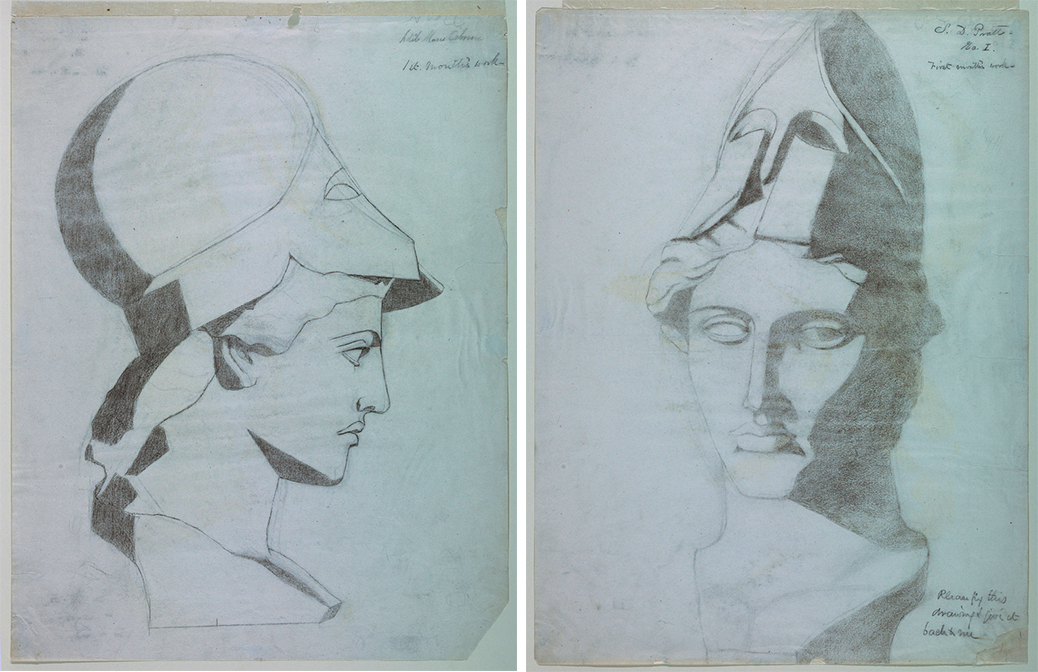
(left to right) Drawing, Head of Athena, ca. 1895; Adile Marie Osborne; Charcoal on paper; Gift of Cooper Union Art School, 1953-31-36.
Drawing, Head of Athena, ca. 1895; S. D. Pratt; Charcoal on paper; Gift of Cooper Union Art School, 1953-31-35.
An archival photograph of the Cooper Union galleries and workspaces cleverly hints at the objects the students were referencing in their work. The perspective drawings of goddess Athena can likely be matched to her plaster counterpart on the far left.
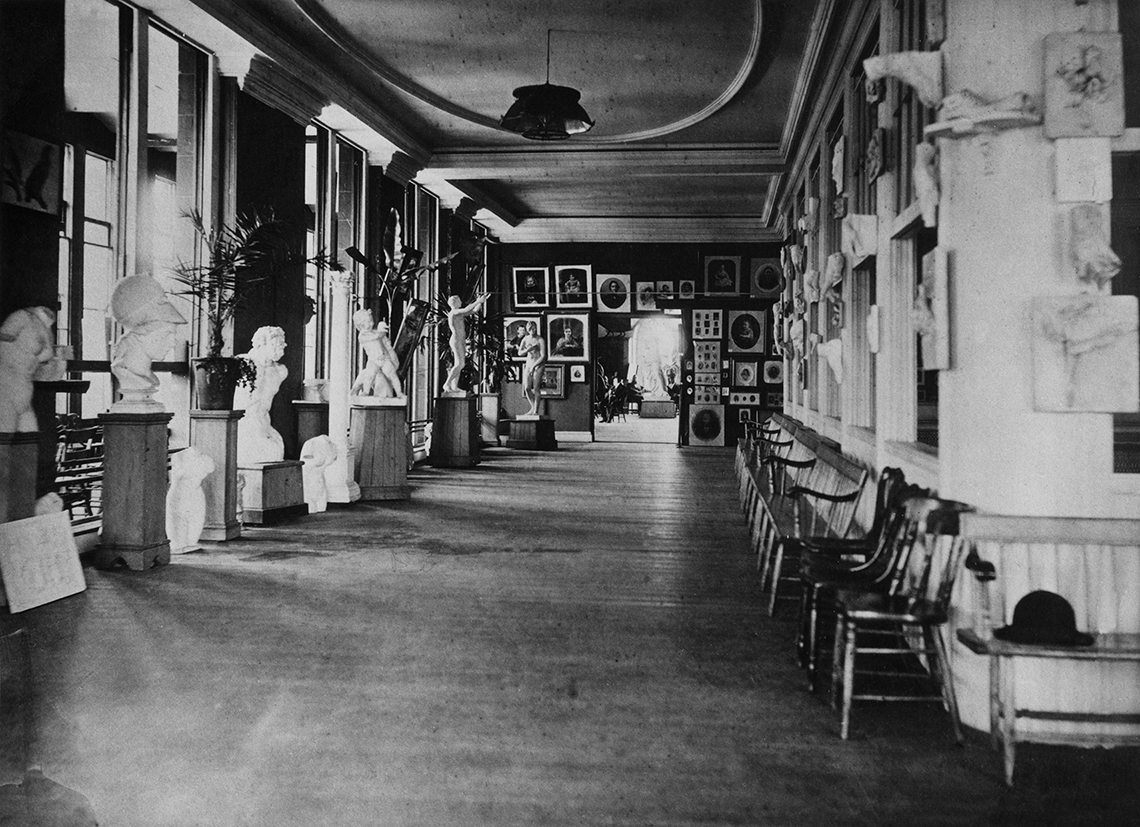
View of the galleries at Cooper Union, ca. 1875, with bust of Athena peeking on the left.
Cooper Union further fostered the artistic education of its students through its facilities, guaranteeing workspace for students of the Women’s Art School and providing a variety of media to offer creative inspiration, as encouraged by the faculty.
“Drawing from plaster casts has been taught almost exclusively, but my impression is, that not only study of light and shade and form are valuable for students in industrial art, but that the different textures should be imitated, as being especially useful in photography; and it would seem desirable another year that metals, lace and folds of cloth should be copied. Skill in the use of drawing materials, I consider of the greatest value for industrial art, even more than for that which is purely artistic.” —Susan N. Carter, Principal of the Women’s Art School, Cooper Institute, The Fourteenth Annual Report of the Trustees of the Cooper Union for the Advancement of Science and Art, 1873
Additional drawings from the 1890s demonstrate the multi-disciplinary focus of the arts of decoration, including designs for fans, porcelain tableware, wallcoverings, and lighting fixtures.
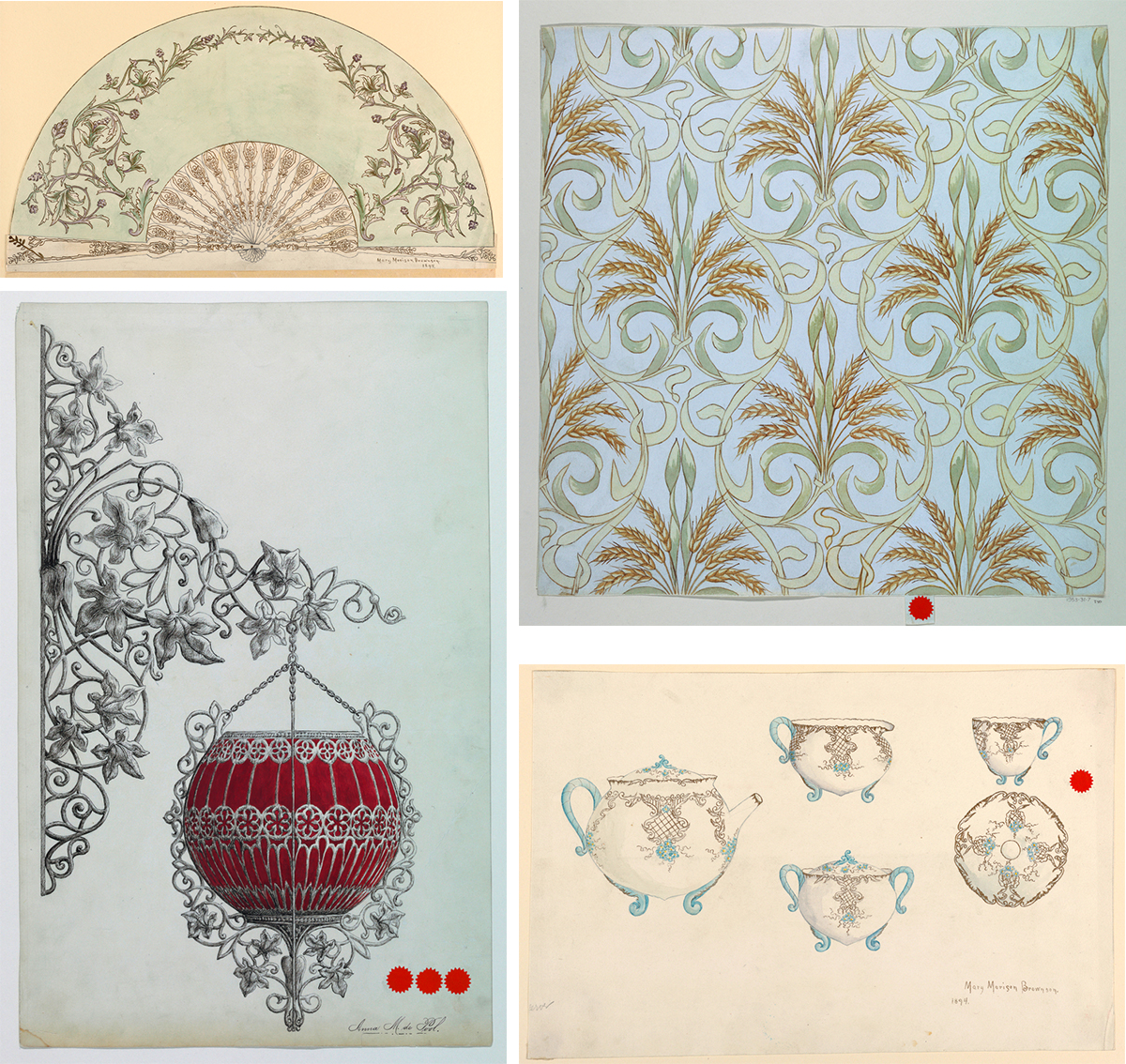
(upper left) Drawing, Design for a Fan, 1894; Mary Morison Brownson (American); Graphite, gold, brush, and watercolor on paper; Gift of Cooper Union Art School, 1953-31-3. (lower left) Drawing, Design for a Wrought Iron Light Fixture, 1894; Anna M. de Pool; Pen and ink, watercolor on Bristol board, red seals; Gift of Cooper Union Art School, 1953-31-5. (upper right) Drawing, Design for Wallpaper, 1894; Anna M. de Pool; Watercolor on paper; Gift of Cooper Union, 1953-31-7; (lower right) Drawing, Design for China Decoration, 1894; Mary Morison Brownson (American); Gold, watercolor on paper; Gift of Cooper Union Art School, 1953-31-4.
The red seals on these drawings signify award rankings, ranging from zero to three stars for excellence.
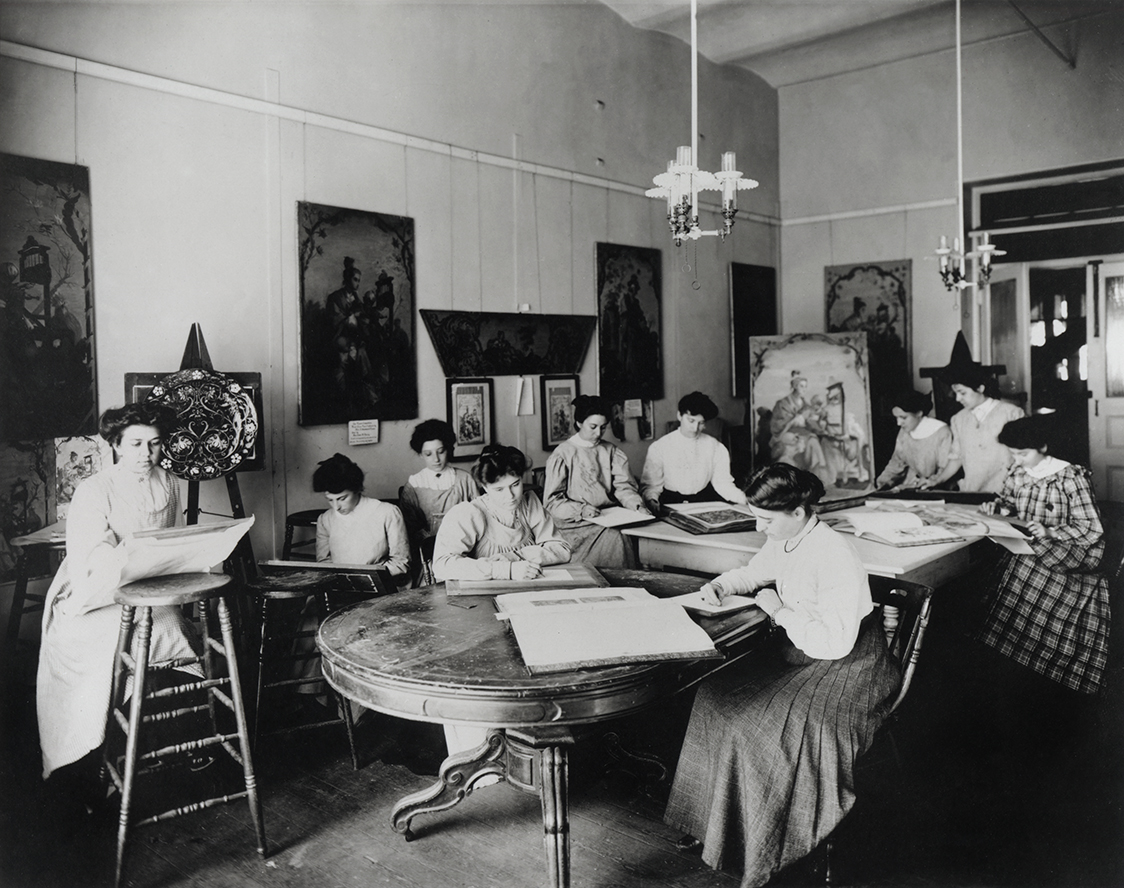
Class of the Women’s Art School, ca. 1900
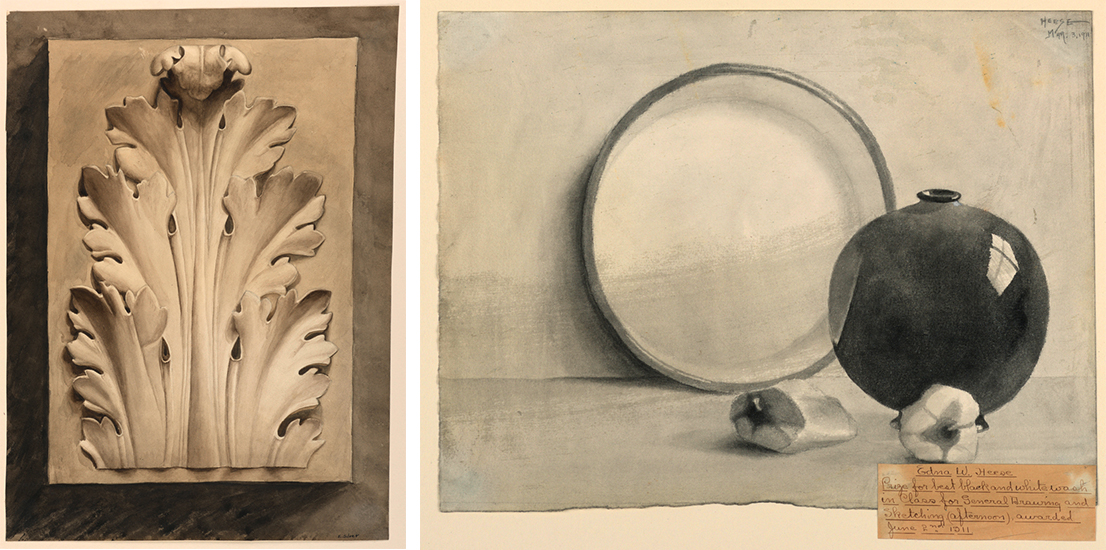
(left to right) Drawing, Acanthus Leaf, 1919; Esther Silver; Sepia wash on paper; Gift of Cooper Union Art School, 1953-31-21. Drawing, Still Life, 1911; Edna W. Heese; Gray washes on paper; Gift of Cooper Union Art School, 1953-31-13.
As noted on the piece itself, the still life by Edna W. Heese (above right) was awarded the “prize for best black and white wash in Class for General Drawing and Sketching” in 1911.
Drawings also evidence students experimenting with styles, creating fresh, intricate designs with historical ethos. Sara Ker’s illuminated initial “B’ (below left) echoes of gothic lettering, but is accentuated with curvilinear tendrils popular with the art nouveau forms at the time of her illustration.
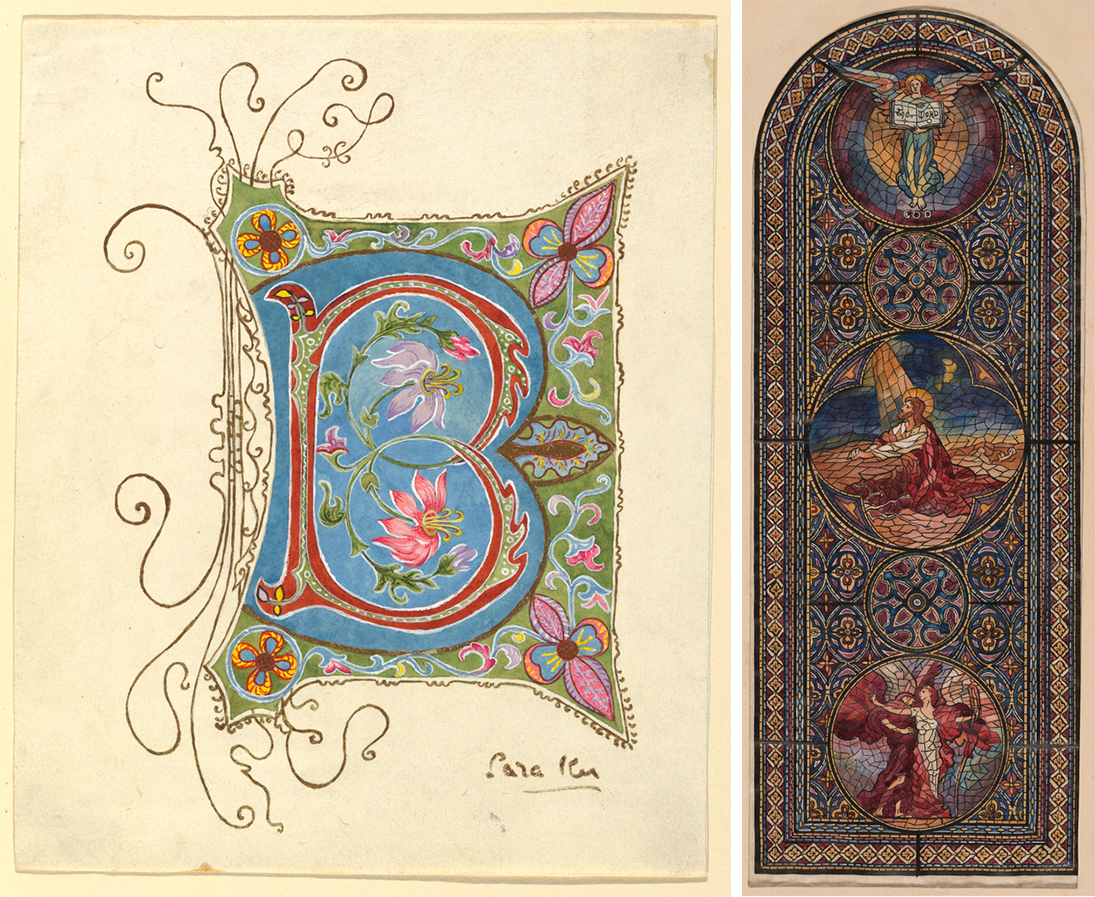
(left to right) Drawing, Illuminated Initial, ca. 1893; Sara Ker; Watercolor and gold on paper; Gift of Cooper Union Art School, 1953-31-16. Drawing, Design for a Stained Glass Window, ca. 1909–12; Izabel M. Coles (American, 1890–1964); Ink and watercolors on tracing paper; Gift of Izabel M. Coles, 1953-30-4.
Izabel M. Coles (represented in the design for a stained glass window above) graduated in 1912. As discussed on Cooper Hewitt’s “Object of the Day” blog, she worked for Tiffany & Company fashioning jewelry before opening her own jewelry business. Her work, including enameled safety-pin necklaces and bracelets, were featured in an exhibition Modern Handmade Jewelry held at the Museum of Modern Art in 1946, with pieces also held in the collection of the Metropolitan Museum of Art.
Making Modernism at Cooper Union
In the 1950s, the museum collection received a series of gifts from the Cooper Union Art School of contemporary student work. As tastes and styles changed in the world of design during the first half of the century, the same evolution emerges in their work, with rampant modernism embracing bold color and abstraction. A number of woodcut prints, ink drawings, and textile designs in Cooper Hewitt’s collection exhibit the students’ studies in this style.
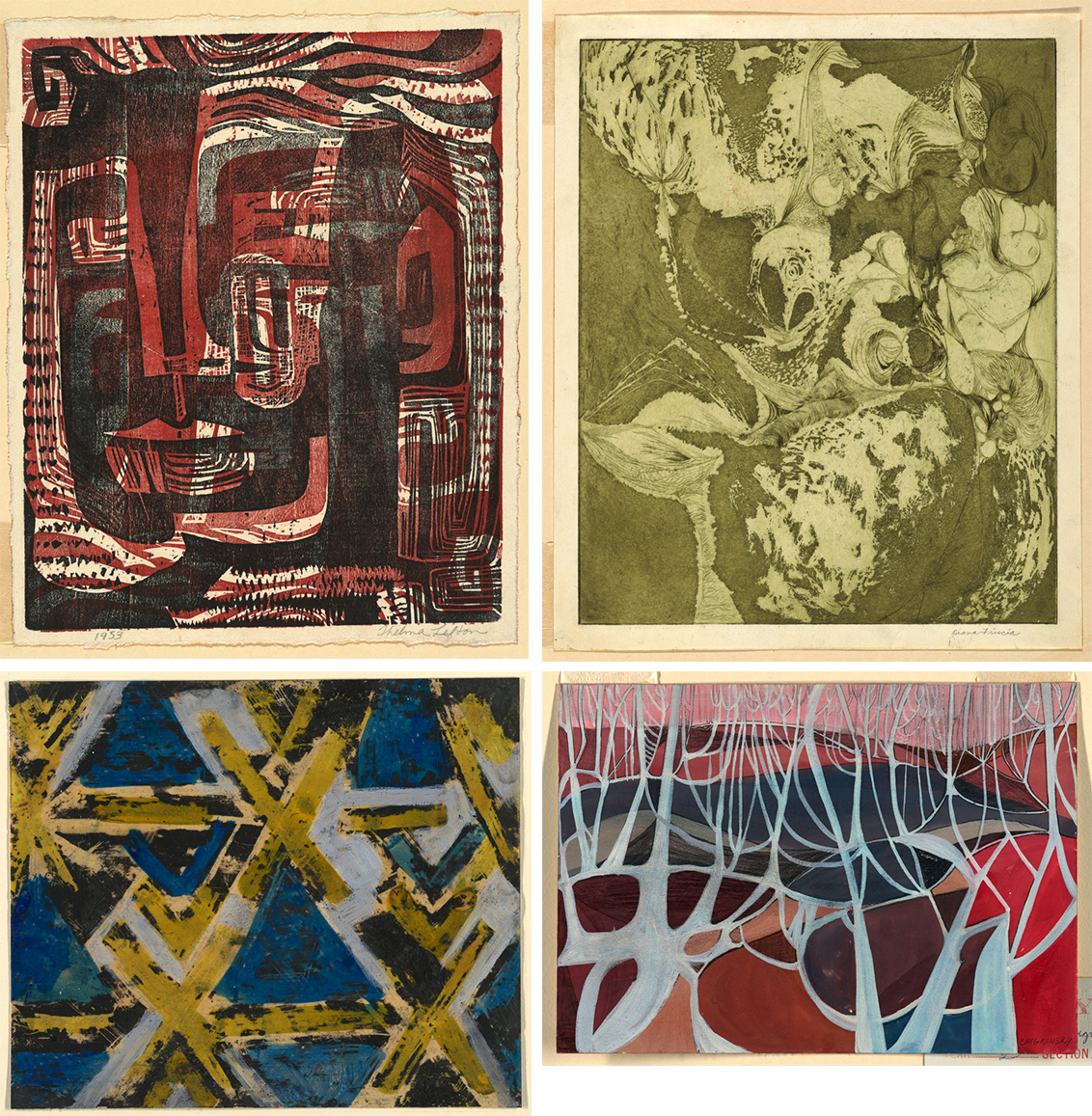
(upper left) Print, Abstraction, 1953; Thelma Lefton (b. 1932); Red and black ink on white paper; Gift of Cooper Union Art School, 1953-223-4. (upper right) Etching, Abstraction, 1956; Diana Friscia (b. 1936); Green ink on white paper; Gift of Cooper Union Art School, 1956-92-3. (lower left) Print, Design for a Textile, 1951–52; Ruth Marossi; Blue, green, black, and yellow wax paint on paper; Gift of Cooper Union Art School, 1952-71-10. (lower right) Drawing, Landscape Abstractions (Scene in a Park), 1957; Norma Miriam Chigrinsky (b. 1937); Colored opaque watercolors on white paper; Gift of Cooper Union Art School, 1957-104-2-b.
Ruth Marossi designed the above black and yellow graphic pattern as a textural textile design for a course taught by Ruth Reeves. Reeves was herself an accomplished American textile designer who taught at Cooper Union in the 1950s and whose work in also in Cooper Hewitt’s collection.
As before, practical studies in perspective, color, and shape for beginner student classes produced transfixing imagery.
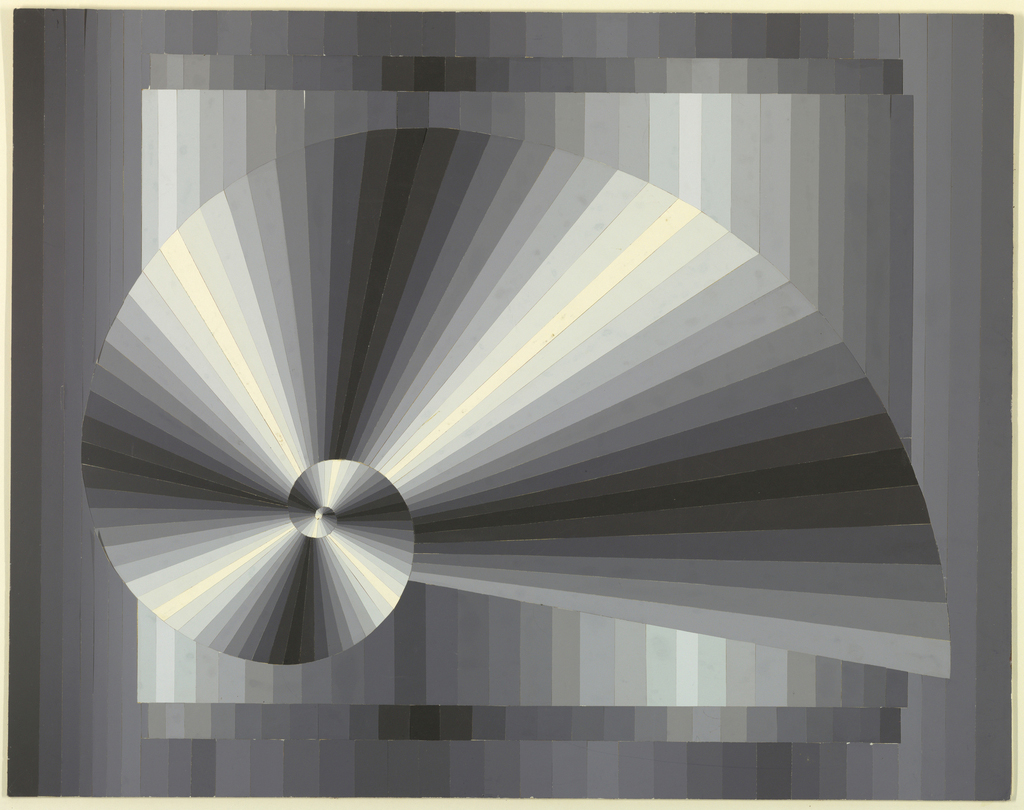
Paper collage, Value Exercise by Means of Changing Scale, 1961; Susan Gates Frye (b. 1935); Gray and white opaque watercolor on cardboard; Gift of Cooper Union Art School, 1961-162-2
The emphasis on drawing persists, with many classic art school drawing class subjects, particularly the human form.
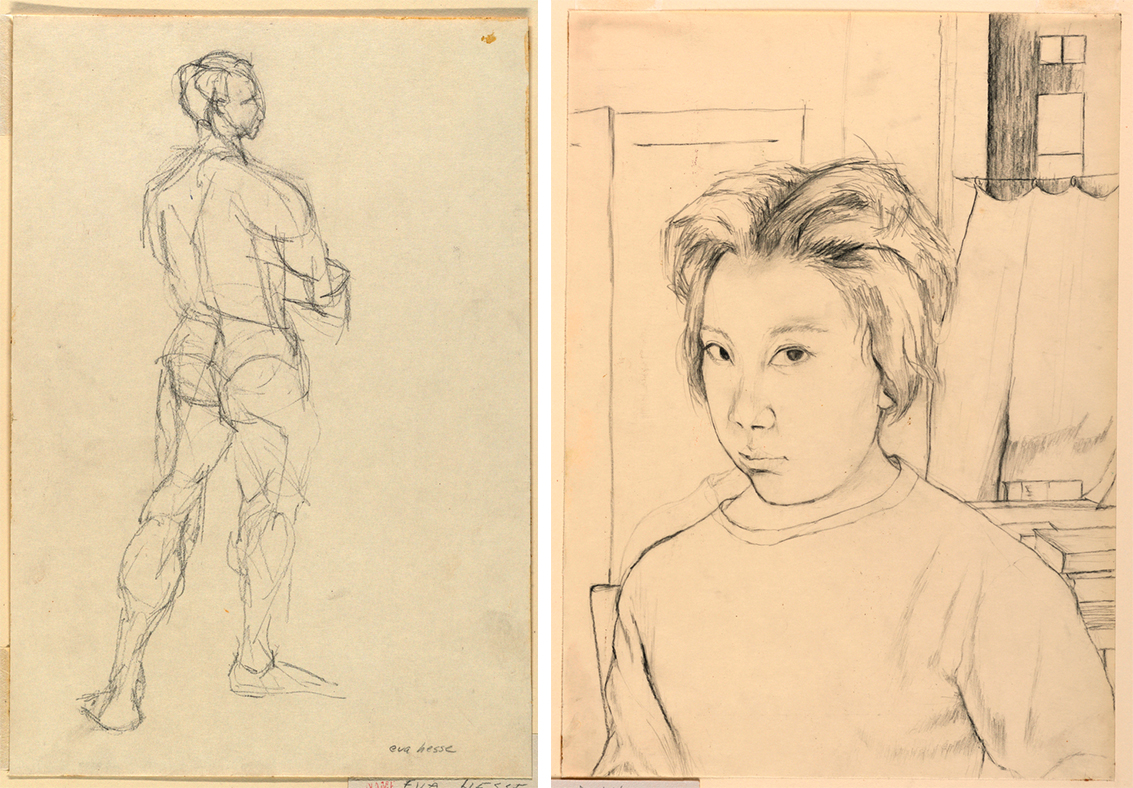
(left to right) Drawing, Study of Male Nude, 1957; Eva Hesse (German-American, 1936–1970); Graphite on white wove paper; Gift of Cooper Union Art School, 1957-104-1. Drawing, Head of a Girl, 1961; Ellen Chao (b. 1940); Pencil on paper; Gift of Cooper Union Art School, 1961-162-6.
Eva Hesse (artist of the nude study above left) first studied at Pratt Institute of Design from 1952–53 before continuing at Cooper Union from 1954–57. She would finish her artistic training at Yale School of Art and Architecture, studying under influential color theorist and artist Josef Albers and receiving a bachelor of fine arts in 1959. She went on to an esteemed career in textile design.
Today, Cooper Hewitt is free to many art and design students, and welcomes sketchpads, pencils, the Pen, and selfies.
